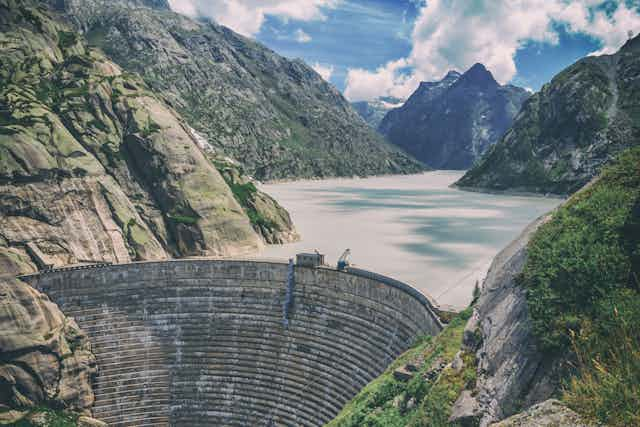Rivers are some of the world’s richest ecosystems and yet they are also some of the most threatened. Despite billion-dollar restoration programmes being implemented worldwide, one of the biggest problems rivers face is actually manmade: dams.
Chances are that much of the water you drink, the electricity you use, and the food you eat would not be possible without dams. Dams help us abstract water for domestic and industrial use; facilitate navigation for commerce and trade; provide fishing and leisure opportunities; and may also help prevent the spread of aquatic invasive species. Hydroelectric dams are also essential for meeting Europe’s 20% renewable energy target by 2020, while climate change is putting additional pressure on surface water resources that may also require new dams.

Dams provide a lot of benefits to society, certainly, but not so much to the actual waterways. We have been building dams all over the place for the last 5,000 years, relentlessly and unstoppably. These days we are building them taller and larger than ever before. The world’s current biggest dam, the hydroelectric Three Gorges Dam which spans the Yangtze river in China holds back a reservoir stretching 600km in length. And a new structure planned for the vast River Congo’s Inga waterfalls in Africa could surpass this, with the ability to generate twice as much hydroelectricity as its Chinese counterpart.
Our water reservoirs are now so vast, and have displaced so much water, that it has been suggested they have tilted the Earth’s axis, slowed its rotation, and become a major source of greenhouse gas emissions.
Damming figures
But dams don’t last forever. Many, such as the diversion dams that fed the iron foundries of pre-industrial Europe, or the tailings dams that store mining waste, date from a bygone era and are no longer in use. They eventually clog-up with sediments, come to the end of their working life, and begin to crumble – sometimes catastrophically, endangering people and livelihoods.
Abandoned dams and weirs also pose a flood hazard that has enormous social and economic costs. Between 1998 and 2009, floods in Europe caused 1,126 deaths and displaced a further half a million people. They cost €52 billion in insured losses, and the whole situation was most likely exacerbated by damming. Clearly we need to start addressing the various challenges and trade-offs presented by dams and other stream barriers.
River fragmentation – the interruption of water flow by human activity – is an old, pervasive problem, but we don’t actually know how big the issue is. There is no complete database of stream barriers in Europe, only fragmentary and incomplete data that differs in quality and coverage.
However one thing is for sure: there are definitely many more barriers than it is possible to mitigate for. As of 2008, the European Environment Agency counted 7,000 large dams that were more than 15 metres in height with accompanying reservoirs, some of which date back to the 2nd century. However, most barriers are smaller than these and not reflected in any global inventory. Some estimations suggest that there may be over a million dams and weirs blocking the free flow of rivers in Europe, but we don’t know the true figure.
Mapping Europe’s waterways
Traditionally, the solution to lost connectivity has been to provide various types of fish passes, or to release hatchery–reared fish in places they can no longer reach. But these are expensive, piecemeal approaches that are rarely efficient as hatchery fish are maladapted and survive poorly in the wild Most fish passes are typically designed only for upstream passage and so suit the strongest swimmers like trout and salmon. Fish stocking, like fish passes, merely address the symptoms, not the causes of lost habitats.

So just how can we go about reconnecting Europe’s rivers? We first need to map all river barriers, and from there we can maximise the benefits of water abstraction while reducing environmental impacts. That is what we are doing as part of the AMBER project, a consortium of 20 universities, NGOs, research organisations and businesses from across Europe. Our research will make clear the extent of river fragmentation for the first time, and inform the development of more efficient stream restoration programmes. Researchers will be using old-fashioned mapping tools combined with the application of cutting-edge technologies such as environmental DNA analysis and remote sensing using drones or other unmanned aerial vehicles to picture and assess stream connectivity.
Though our goals are to show practitioners how to improve river connectivity, and plan the construction of new barriers in a way that minimises environmental impacts, we need the public’s help. Our project is indeed on a grand scale, but it requires water managers to think globally and act locally.
For it to work, we need the help of citizens to map stream barriers and assess their impacts. We will soon launch a smartphone application to do this but in the meantime are connecting with anyone interested in contributing on Twitter and Facebook.

